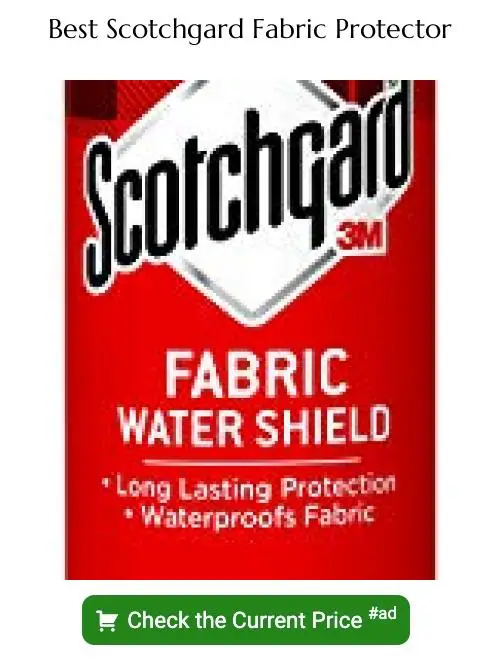Last updated on
Discover the simple steps to effectively protect your couch from spills and stains by applying Scotchgard in this easy-to-follow guide.
If you’ve ever spilled something on your couch and watched in horror as the liquid seeped into the fabric, then you know how frustrating it can be to keep your furniture looking clean and new. But fear not! There’s a solution that can protect your couch from spills, stains, and everyday wear and tear: Scotchgard.
In this article, we’ll show you how to Scotchgard a couch so that you can enjoy your furniture without worrying about accidental spills or stains ruining its appearance. So let’s get started!
Key takeaways:
- Benefits of Scotchgard: stain resistance, durability, easy maintenance, cost-effective solution
- Necessary materials and tools: Scotchgard spray, cleaning supplies, protective gear, drop cloths or plastic sheeting, well-ventilated area
- Preparing the couch for Scotchgard: vacuuming, mild detergent solution wipe down, let it dry completely
- Performing a spot test: apply small amount, let it dry, check for changes in color or texture
- Applying Scotchgard: well-ventilated area, shake can, spray in sweeping motion, multiple thin coats
Table of Contents
Benefits of Scotchgard
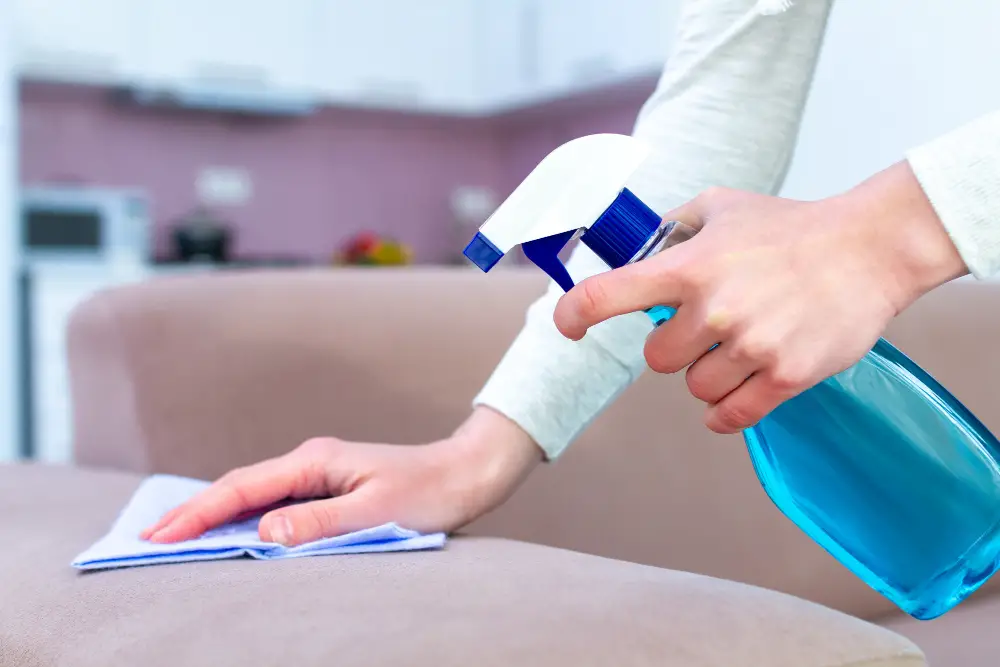
There are many benefits to using Scotchgard, including:
1. Stain Resistance: One of the primary benefits of Scotchgard is its ability to repel liquids and prevent stains from setting into the fabric.
2. Durability: By adding an extra layer of protection, Scotchgard helps extend the life of your couch by preventing wear and tear caused by everyday use.
3. Easy Maintenance: With a scotchgarded couch, cleaning up spills becomes much easier as they don’t penetrate deep into the fibers but stay on top instead.
4. Cost-Effective Solution: Investing in Scotchguarding your furniture can save you money in costly repairs or replacements down the line.
Necessary Materials and Tools
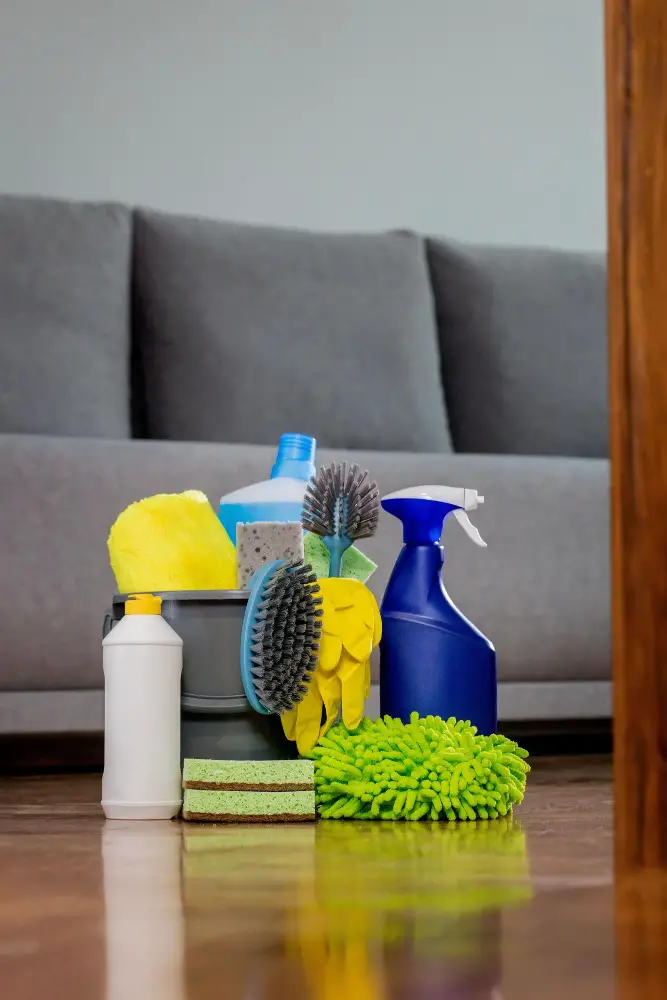
You don’t want to be halfway through the process only to realize that you’re missing something crucial! Here are the items you’ll need:
- Scotchgard spray: This is obviously a must-have item for this project.
- Cleaning supplies: Before applying Scotchgard, make sure your couch is clean and free of any dirt or debris.
- Protective gear: It’s always a good idea to wear gloves and a mask when working with chemicals like those found in Scotchgard spray.
- Drop cloths or plastic sheeting: These will protect your floors from overspray during application.
- A well-ventilated area: Make sure there’s plenty of fresh air circulating while using this product.
Preparing the Couch for Scotchgard
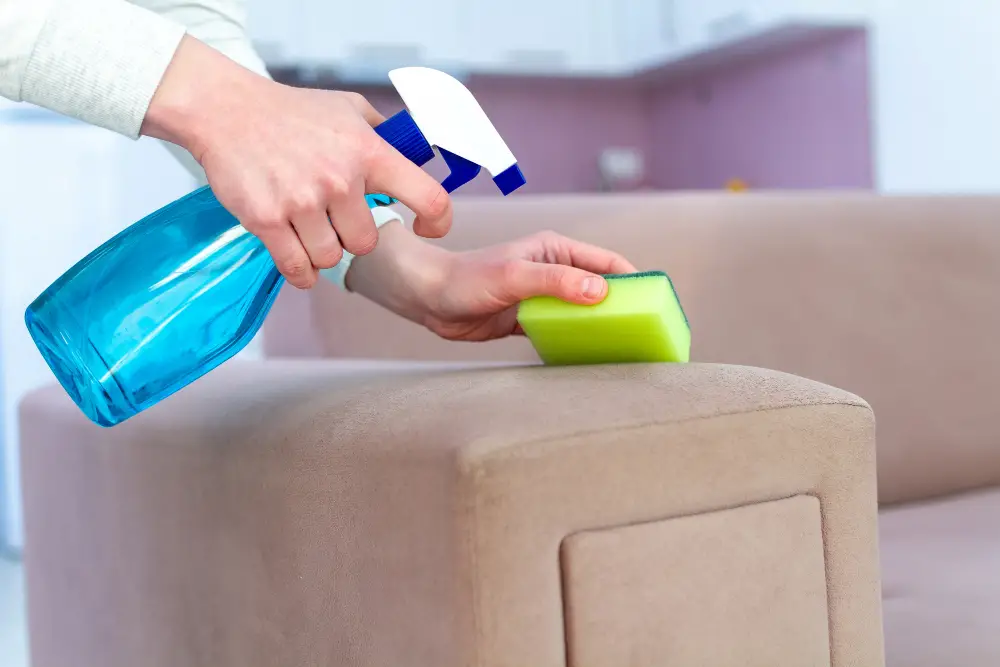
This will ensure that the product adheres well and provides maximum protection against spills and stains.
Firstly, remove any loose debris or dirt from the couch by vacuuming it thoroughly with a brush attachment. Pay special attention to crevices and seams where dust can accumulate.
Next, use a mild detergent solution (such as dish soap mixed with water) on a clean cloth or sponge to gently wipe down the entire surface of your couch. Be sure not to saturate the fabric too much as this can cause damage.
Once you’ve cleaned off all visible dirt and grime from your sofa, let it dry completely before proceeding further with Scotchgard application process.
Performing a Spot Test
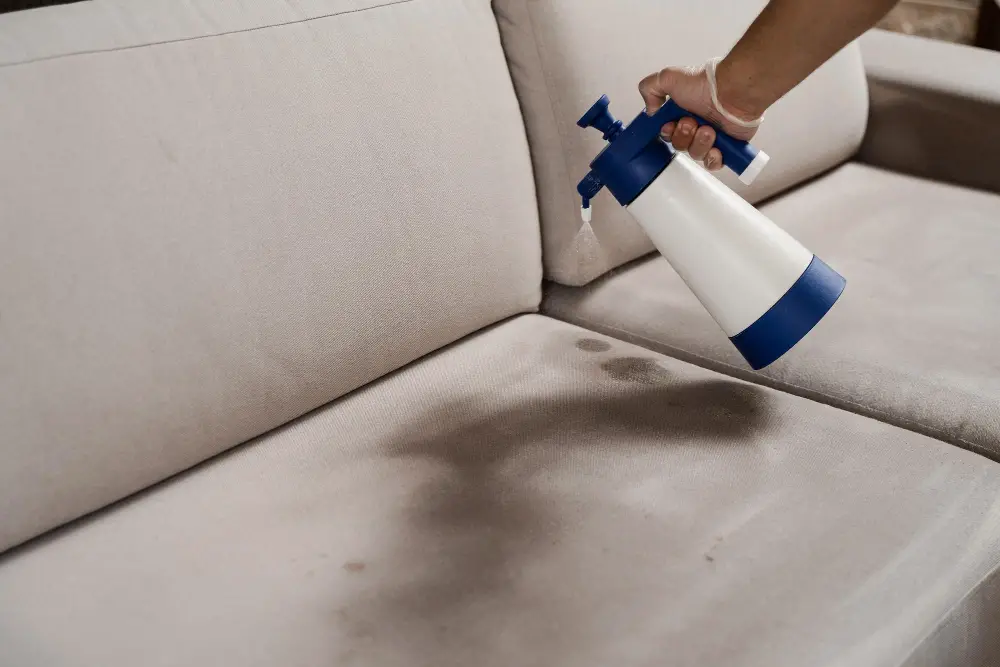
This will help you determine if the product is compatible with your couch’s fabric and prevent any unwanted discoloration or damage.
To perform a spot test, choose an inconspicuous area of the couch such as the back or underside of a cushion. Apply a small amount of Scotchgard and let it dry completely according to package instructions.
Check for any changes in color or texture before proceeding with treating the entire surface.
Applying the First Coat of Scotchgard
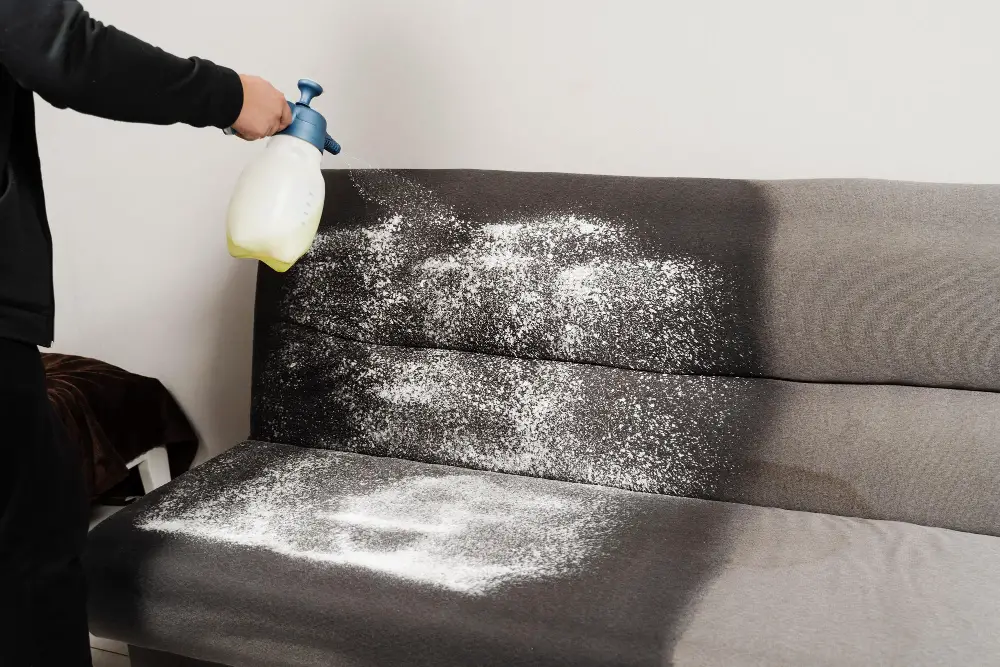
Make sure that you are in a well-ventilated area and that there is no wind or breeze blowing around. Shake the can of Scotchgard well before using it and hold it about 6 inches away from the surface of your couch.
Start spraying in a sweeping motion, making sure to cover every inch of fabric evenly with an even layer. Be careful not to oversaturate any one area as this may cause discoloration or damage to your furniture.
After applying the first coat, let it dry completely according to manufacturer instructions before applying another layer if necessary. Remember that multiple thin coats are better than one thick coat when using Scotchgard on upholstery.
Applying a Second Coat for Added Protection
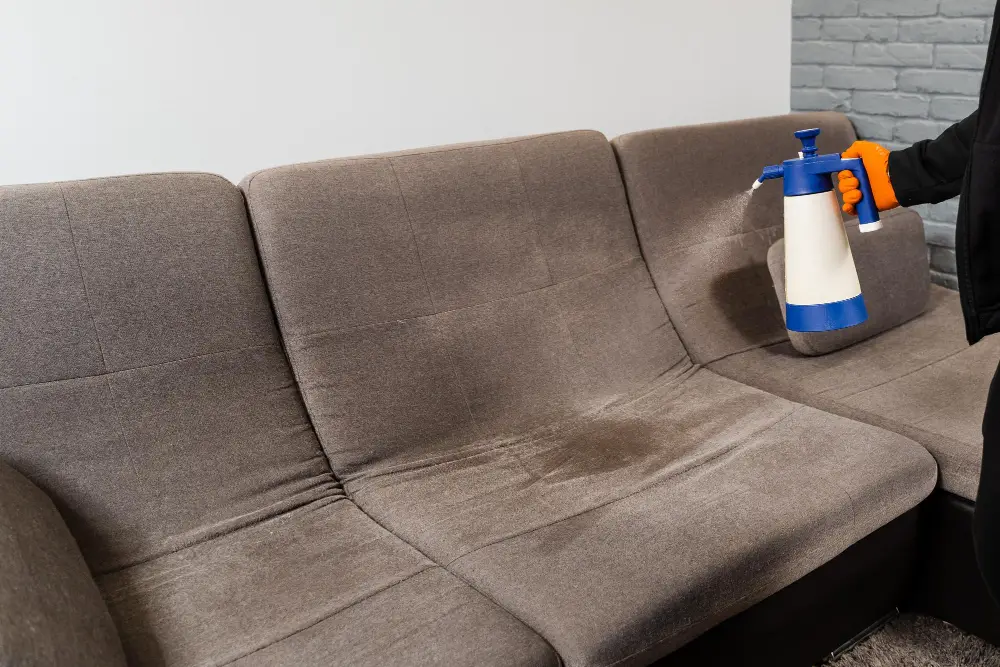
This step is optional but highly recommended if you want your couch to be as protected as possible against spills and stains.
To apply the second coat, wait until the first one has dried completely. Then, repeat the same process by spraying evenly across all areas of your couch.
Be sure not to oversaturate any particular area with too much spray.
After applying both coats of Scotchgard, allow your couch ample drying time before using it again or sitting on it. The drying and curing process can take up to 24 hours depending on humidity levels in your home.
Drying and Curing Time
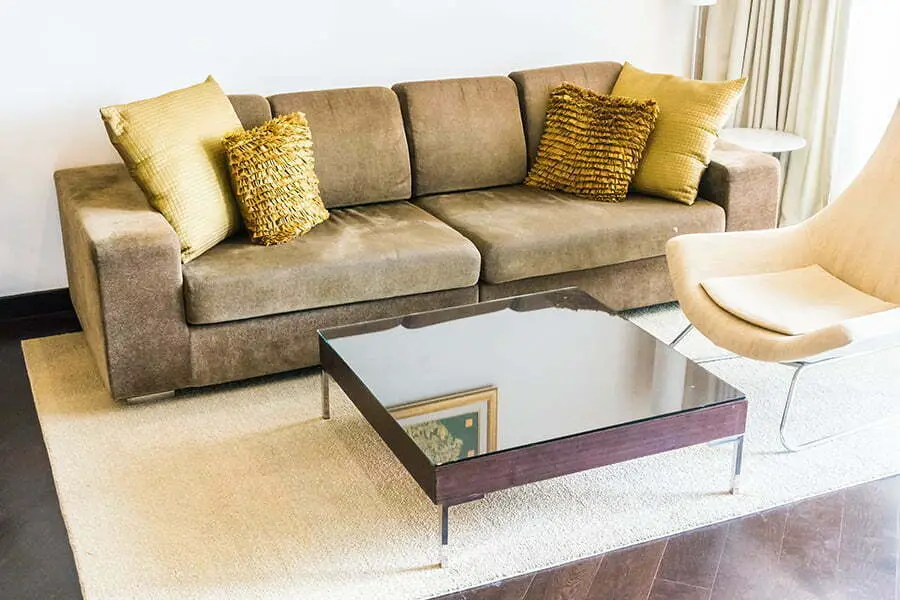
The drying time for Scotchgard can vary depending on factors such as humidity and temperature. Generally, you should allow at least 24 hours for the first coat of Scotchgard to dry completely before applying a second coat or using your couch again.
After applying the second coat of Scotchgard, give it another 24 hours or more to fully cure before sitting on or using your couch. This will ensure that the protective barrier has formed properly and is ready to repel any spills or stains that may come its way.
It’s also essential not to expose your freshly treated furniture piece(s) with water during this period as doing so could damage all efforts made in Scotchgarding them.
Post-Scotchgard Maintenance
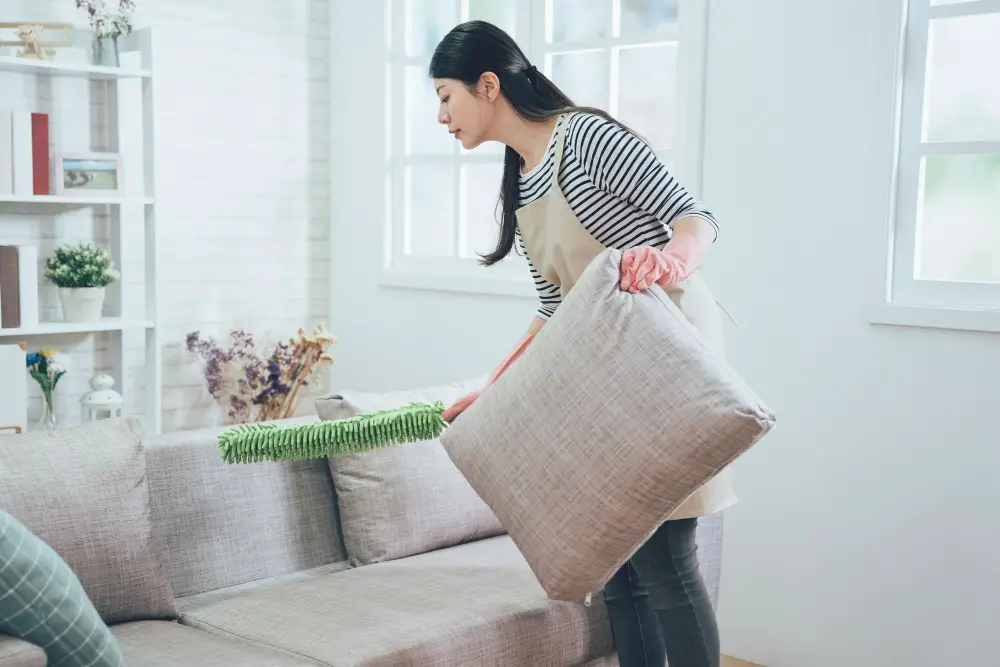
One way to do this is by regularly vacuuming the surface of the couch with a soft brush attachment. This will help remove any dirt or debris that may have accumulated on the fabric and prevent it from becoming embedded in the fibers.
If you do happen to spill something on your Scotchgard-treated couch, don’t panic! Simply blot up as much of the liquid as possible with a clean cloth or paper towel. Avoid rubbing or scrubbing at the stain, which can cause it to spread further into the fabric.
For tougher stains, you can use a mild detergent solution and gently dab at them until they lift away. Be sure not to use too much water when cleaning your Scotchgard-treated furniture since excessive moisture can compromise its protective barrier.
Reapplying Scotchgard
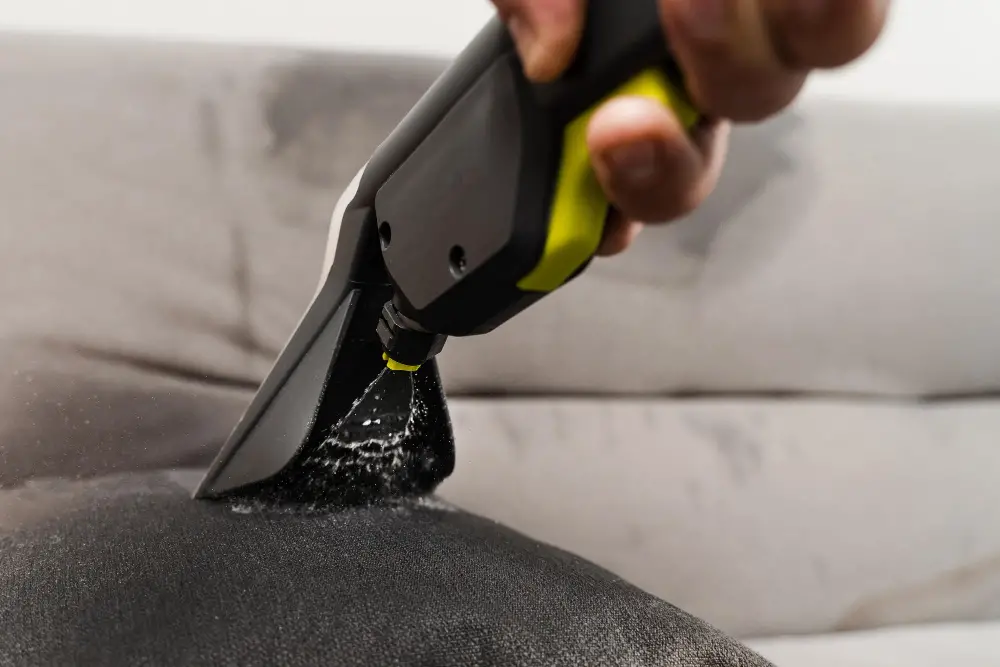
Over time, the protective layer of Scotchgard can wear off due to everyday use and cleaning. To ensure that your couch remains protected from spills and stains, it’s recommended that you reapply Scotchgard every six months or so.
To begin the process of reapplying Scotchgard on your couch, start by thoroughly cleaning the surface using a gentle cleaner suitable for upholstery fabrics. Once cleaned and dried completely, apply a fresh coat of Scotchgard following the same steps as before.
It is essential not to skip this step as neglecting regular maintenance could lead to permanent damage on your furniture caused by spills or stains penetrating through unprotected fabric fibers.
Cleaning Scotchgard-treated Couch
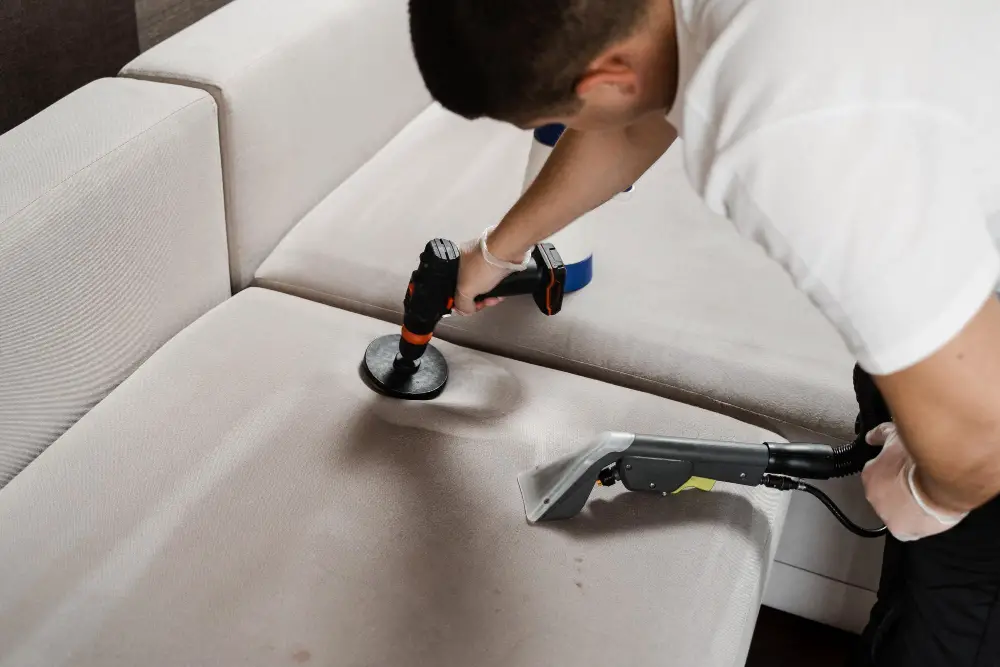
While the protective coating will help repel spills and stains, accidents can still happen. The good news is that cleaning a Scotchgard-treated couch is relatively easy.
Firstly, if there’s a spill or stain on your couch, act quickly by blotting up as much of the liquid as possible with a clean cloth or paper towel. Avoid rubbing the area vigorously as this can damage both the fabric and Scotchgard protection.
Next, use warm water and mild soap (such as dishwashing detergent) to gently scrub away any remaining residue from the spill/stain using circular motions with another clean cloth. Rinse thoroughly with water until all soap has been removed.
Allow your sofa to air dry completely before sitting on it again – do not use heat sources such as hairdryers or heaters for faster drying times since they may damage both fabric and coating.
Additional Tips for Scotchgarding Success

First and foremost, make sure you’re working in a well-ventilated area. The fumes from the spray can be strong, so it’s important to have plenty of fresh air circulating.
Another tip is to apply Scotchgard in thin layers rather than one thick coat. This will allow each layer to dry properly and create an even protective barrier on your couch.
It’s also important not to oversaturate the fabric with Scotchgard as this could cause discoloration or damage over time. Follow the instructions on the can carefully and use only as much product as recommended for your specific type of couch material.
Consider using a specialized upholstery cleaner designed specifically for use with Scotchgard-treated fabrics when cleaning your couch in order to maintain its protective properties over time.
Warnings and Safety Precautions
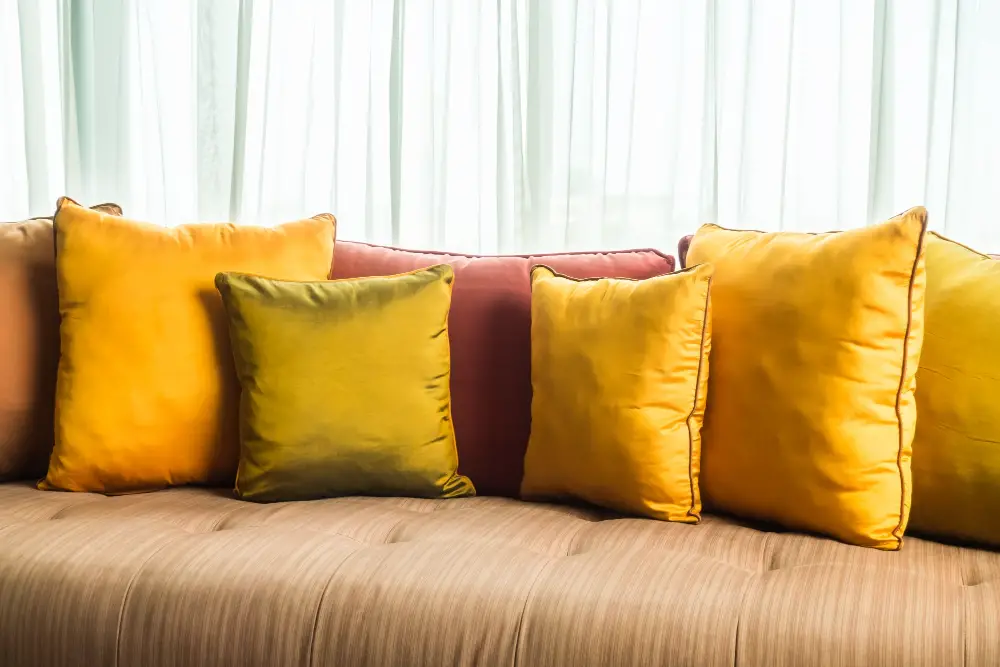
First and foremost, make sure you’re working in a well-ventilated area. The fumes from the spray can be harmful if inhaled for an extended period of time.
Avoid smoking or using any open flames while applying Scotchgard as it is highly flammable. Keep children and pets away from the area until everything has dried completely.
It’s also essential to read all instructions on the label before use carefully. If you have any questions or concerns about using this product safely, don’t hesitate to contact their customer service team for guidance.
FAQ
Should I put Scotchgard on my couch?
Yes, you should put Scotchgard on your couch as it is recommended by most experts to minimize stains on fabric furniture.
How long does Scotchgard last on a sofa?
Scotchgard lasts six months on a sofa or after every professional or water extraction cleaning.
How many cans of Scotchgard do I need for a sofa?
You need one can of Scotchgard for an average-sized sofa.
Can I Scotchgard myself?
Yes, you can Scotchgard yourself at home as it is a simple spray treatment that prevents spills from soaking into your furniture without making the fabric feel stiff and crunchy.
What is the proper technique for applying Scotchgard to a couch effectively?
To apply Scotchgard to a couch effectively, spray the product evenly on the fabric surface from a distance of 6-8 inches, ensuring proper coverage and protection without oversaturation.
Are there any precautions or safety measures to take while using Scotchgard on a sofa?
When using Scotchgard on a sofa, ensure proper ventilation and avoid inhaling the spray by wearing a mask.
Can Scotchgard be used on different types of upholstery materials, such as leather and fabric?
Scotchgard can be used on various upholstery materials, including leather and fabric.
